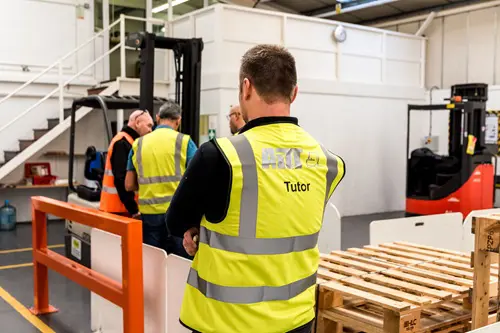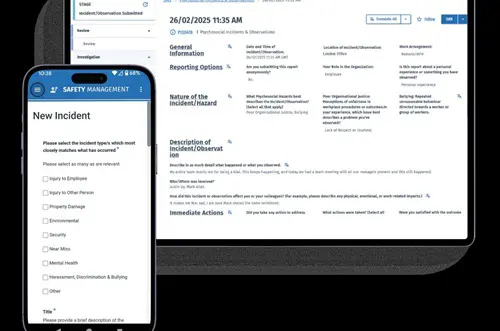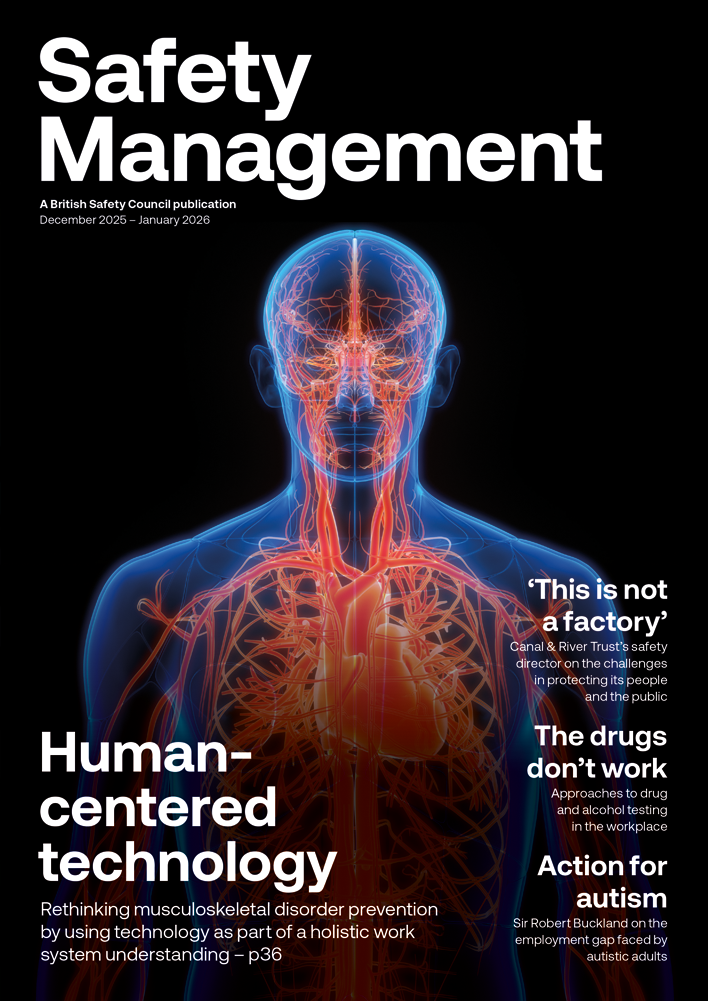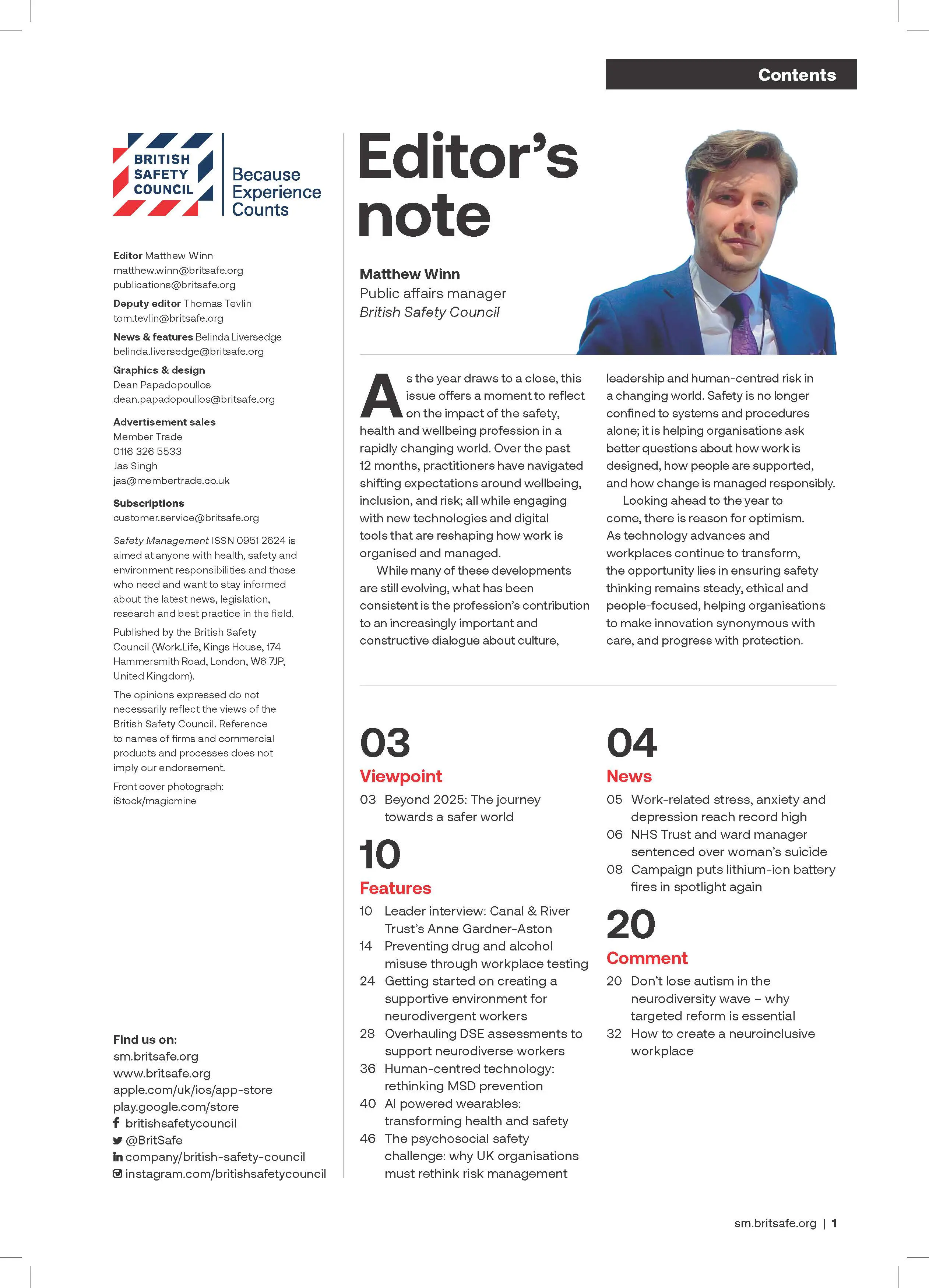Successful management of occupational road risk is only possible if company directors take ownership of the process, setting expectations across the business, monitoring performance and setting a good example themselves.
Features
Driving accountability: why directors must own road risk
Every day, millions of employees take to the road as part of their job. They drive company vans, trucks, pool cars and their own vehicles – many of them not even recognising that they’re driving for work. Yet driving for work is one of the riskiest activities a business can ask its staff to undertake.
It’s a risk that’s often under-managed, under-reported and misunderstood. And when things go wrong, it’s not just the driver who faces consequences – it’s the business, and critically, its leadership.
This article explores why directors must own the risk of work-related driving, what the law demands, how responsibilities cascade through the organisation and what good practice looks like in reality.
The scale of the risk
Government statistics consistently show that around a third of all road fatalities involve at least one person who was driving for work. In the most recent reporting year, 459 people died in collisions involving a work-related driver – more than double the number of people, both workers and members of the public, who lost their lives in RIDDOR-reportable workplace accidents. Yet because most road deaths aren’t RIDDOR-reportable, they often fall outside the scope of traditional health and safety oversight.
 Directors must ensure that road safety is not just a priority, but a value embedded in decision-making. Photograph: iStock
Directors must ensure that road safety is not just a priority, but a value embedded in decision-making. Photograph: iStock
There are over 20 million vehicles used for work in the UK, including company cars, vans, trucks and an estimated 14 million ‘grey fleet’ vehicles – privately owned cars used for business journeys. That’s around half of all the vehicles on UK roads. And with tens of thousands of injury collisions each year, the odds of a business experiencing a serious incident are far higher than most realise.
Despite this, many organisations still treat road risk as a transport issue, not a board-level health and safety concern. It’s often delegated to fleet managers, HR or operations teams, with little strategic oversight. But when a serious incident occurs, the question isn’t just whether the driver was at fault, it’s whether the business had done enough to prevent it. And that responsibility sits squarely with the directors.
Legal duties and leadership accountability
The Health and Safety at Work Act 1974 sets out clear duties for employers. Section 2 requires them to ensure the health and safety of their employees. Section 3 extends that duty to others affected by their operations, including other road users. Section 7 places obligations on employees to follow established safety procedures. But it’s Section 37 that brings the sharpest focus to leadership accountability. It states that if a company commits an offence under health and safety law, and that offence was due to the consent, connivance or neglect of a director or senior manager, that individual can be prosecuted.
This isn’t theoretical. There have been cases where directors have faced fines, disqualification and even custodial sentences following serious road incidents. The law is clear: directors must ensure that driving for work is managed as rigorously as any other safety-critical activity.
They must provide the leadership, resources and oversight to make that happen. Yet too often, directors assume that because they don’t personally manage drivers or vehicles, the risk isn’t theirs to own. They delegate tasks such as licence checks, vehicle maintenance, driver training, etc to others. And while delegation is often necessary, it does not absolve responsibility. The board must retain ownership of the risk. It must ensure that systems are in place, policies are robust and compliance is monitored. If those systems fail, it is the board that will be held to account.
 There are over 20 million vehicles used for work in the UK, including company cars, vans, trucks and an estimated 14 million ‘grey fleet’ vehicles. Photograph: iStock
There are over 20 million vehicles used for work in the UK, including company cars, vans, trucks and an estimated 14 million ‘grey fleet’ vehicles. Photograph: iStock
When things go wrong
The consequences of poor road risk management are not limited to legal liability. They ripple through every part of the business. The Driving Change video series, developed by Driving for Better Business, illustrates this vividly. In one scenario, a distracted employee takes a business call while driving, swerves across lanes, and causes a multi-vehicle collision. Another driver, travelling too fast with unsecured equipment, is caught up in the incident and suffers life-changing injuries.
Neither company had a robust driving for work policy. Neither treated road risk as a health and safety issue. And both faced serious repercussions – not just for the drivers, but for their leadership teams.
The chief executive is left wondering whether the Health and Safety Executive (HSE) will investigate, whether criminal charges are possible, and whether the company’s reputation can recover. The operations manager is forced to audit vehicle records and scheduling practices. The health and safety manager questions why the incident wasn’t RIDDOR-reportable and whether previous recommendations were acted upon. HR must deal with trauma, recruitment and budget pressures. Finance faces the prospect of compensation claims, insurance hikes and reputational damage.
These are not hypothetical concerns. They reflect the real-world fallout of unmanaged risk. And they underscore the need for board-level ownership.
Building a culture of safety
Owning the risk means more than signing off a policy. It means embedding road safety into the culture of the organisation. That starts with a clear, comprehensive driving for work policy – one that sets expectations, defines responsibilities and provides practical guidance. But it doesn’t end there.
The policy must be communicated effectively. Drivers must understand what’s expected of them, and why it matters. Managers must be trained to support compliance. Systems must be in place to monitor behaviour, investigate incidents and learn from mistakes. And leadership must be visible – demonstrating commitment, allocating resources and holding people to account in a fair and consistent way at all levels of the business, including their own management colleagues.
This cultural shift is essential. Without it, policies become paperwork. Drivers revert to unsafe habits. Managers turn a blind eye. And directors are left exposed.
Creating a culture of safety requires engagement. Drivers should be involved in policy development, invited to share concerns and encouraged to suggest improvements. They should see that safety is valued, not just enforced. That it’s about protecting people, not punishing them, and that leadership is listening.
 Vehicle fleets are often one of the top three overheads in a business. Photograph: iStock
Vehicle fleets are often one of the top three overheads in a business. Photograph: iStock
It also requires consistency. Safety rules must apply to everyone, regardless of role or seniority. If van drivers are disciplined for using a mobile phone, but directors routinely take calls while driving, the message is lost. If policies are ignored in pursuit of targets, safety becomes optional. And if incidents are swept under the carpet, lessons are never learned.
Directors must lead by example. They must ensure that safety is not just a priority, but a value. That it’s embedded in decision-making, not bolted on. And that it’s reflected in behaviour, not just in board minutes.
The role of the health and safety manager
Health and safety professionals play a critical role in coordinating driver safety. They understand the legislation, oversee policy development and often lead investigations. But they cannot do it alone.
In the event of a serious incident, HSE will want to speak to the health and safety manager. They’ll ask about risk assessments, training, compliance and reporting. But they’ll also ask: Who owns this risk? Who signed off the policy? Who ensured it was followed?
That’s why board-level ownership is essential. Without it, even the best health and safety manager is working in a vacuum.
Directors must empower their safety teams, support their recommendations and ensure that road risk is treated with the same seriousness as any other operational hazard. They must ask the right questions, demand evidence and act on findings. And they must recognise that when it comes to safety, silence is not neutrality – it’s complicity!
The business case
Beyond legal and moral duties, there’s a compelling financial case for managing road risk. Vehicle fleets are often one of the top three overheads in a business. Poor driver safety leads to increased collisions, downtime, insurance premiums, third-party claims and reputational risk. It also drains management time, disrupts operations and damages client relationships.
Conversely, good management delivers real savings. Fewer incidents mean lower premiums, less downtime and happier customers. Safe drivers use less fuel, cause less wear and tear and stay with the business longer. That’s why road risk management isn’t just a compliance issue, it’s a business opportunity. And it starts with leadership.
Companies that manage road risk well often see improvements in productivity, customer satisfaction and employee retention. They win more contracts, attract better talent and build stronger reputations. They become known not just for what they do, but for how they do it. And they do it safely.
Conclusion
Driving for work is not just a transport issue – it’s a board-level health and safety risk. Directors have a legal, moral and financial duty to own that risk, ensure it’s properly managed and lead by example.
Delegation is essential. But ownership cannot be outsourced. The consequences of getting it wrong are too great. And the benefits of getting it right are too valuable to ignore.
So, ask yourself: Do we have a robust driving for work policy? Is it embedded in our culture? Are we confident in our systems? And most importantly – are we doing enough to keep our people safe?
Because when it comes to road risk, leadership isn’t optional. It’s essential.
Access free driver risk management resources at:
drivingforbetterbusiness.com/support
Simon Turner is Engagement manager at Driving for Better Business
FEATURES

Why workplace transport training is changing in 2026 and what it means for employers
By AITT on 26 November 2025
New workplace transport training categories due in January mean it is essential to ensure operators of material handling equipment have the necessary training for the exact type of machine they use, and accredited training providers are an ideal source of advice and conversion training.

Educating drivers – why greater road awareness and education is at the heart of future change
By Leo Taylor, Drivetech, from The AA on 17 November 2025
Drivers are sometimes offered the option of taking a road safety course as an alternative to enforcement sanctions like penalty points on their licence, and the evidence suggests this training has a positive impact on driver behaviour, including for those who drive for work purposes.

The psychosocial safety challenge: why UK organisations must rethink risk management
By Jose Arcilla, HSI on 09 December 2025
Employers are increasingly keen to effectively manage psychosocial risks such as stress, bullying and poor work-life balance, and EHSQ digital tools make it easier both for workers to report psychosocial problems and for managers to spot patterns and trends, intervening early to protect everyone’s mental and physical wellbeing.



